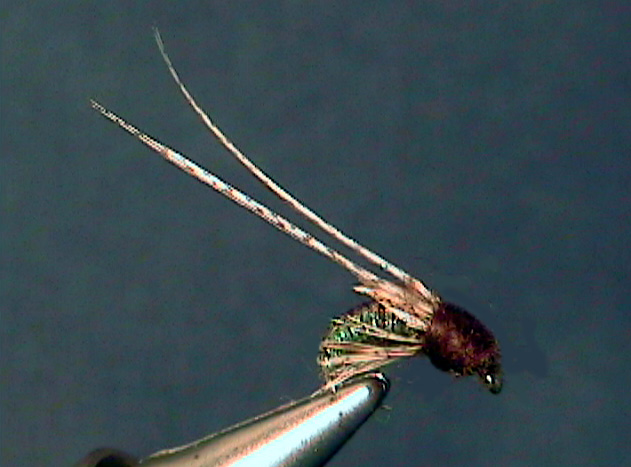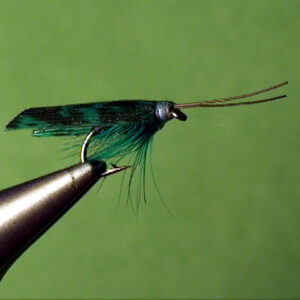Hook Size: 14
The Perfect Fly Dark Blue Sedge Caddis Pupa trout fly imitates the Dark Blue Sedge Caddis larva stage of life. Their larvae live in a case type shelter until the pupa is formed just prior to the hatch. Just prior to the hatch, the pupa comes out of its case and accents from the bottom of the stream to the surface where it emerges into an adult. This makes them easy prey for trout. They should be fished from the bottom to the surface of the water by first allowing the fly to sink to the bottom and then bringing the fly up to the surface using the current and the tip of the rod.
The Dark Blue Sedge is the Psilotreta labida and frontalis species. In the
Northeast and New England areas where these caddisflies are most plentiful they
hatch from about the middle of May to the first of July. They exist in the Eastern
United States and the hatch times may vary depending on the exact location. The
larva live for two years, not one like many caddisflies. They start to hatch after
the sun sets and hatch on into the evenings.
About the first indication of a hatch is that you will see the caddisflies in the air.
They open the cases near the bottom. Gases help accent them to the surface of
the water. You would rarely see them in the water in the currents. You want to
start fishing the pupa as soon as you know they are hatching.
Pupa Presentation:
The “Perfect Fly” Dark Blue Sedge Pupa Fly should be presented up and across.
You may need to add some weight to the tippet a few inches from the fly but add
as little as possible to get it down. Mend your line just as soon as the fly hits the
water to help get it down.
You want the fly to swing all the way around to the downstream position near the
bottom. When it gets to about the down and across position, hold the tip of the
rod at about 10:00 O’Clock to allow the fly to come back to the surface.
Remember you are trying to imitate the pupae rising to the surface to hatch.
Most of the trout will take the fly when it is rising to the surface. If you don’t get a
take after two or three cast in any one feeding lane, move downstream two or
three feet and repeat the process. The pupa tend to concentrate in specific
locations in the stream so you want to keep trying until you connect. When you
do you can sometimes catch a few trout from one location.
Copyright 2013 James Marsh

